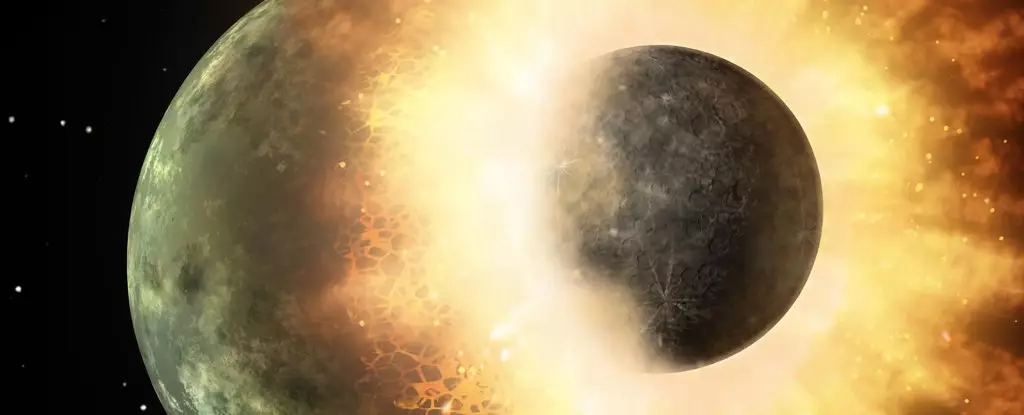The origins of the Moon have long been a subject of scientific intrigue and debate. However, recent studies have pointed towards a consensus regarding the formation of our celestial neighbor. The prevailing theory suggests that the Moon was created around 4.5 billion years ago, following a colossal collision between Earth and a Mars-sized protoplanet known as Theia. This impact resulted in the ejection of debris into orbit around Earth, eventually coalescing to form the Moon.
A recent study conducted by Stephen Lepp and his team from the University of Nevada has shed new light on the dynamics of the material ejected from the Earth-Moon impact. It was initially believed that the Moon formed orbiting Earth at approximately 5% of its current distance, gradually moving away due to tidal effects over time. The surface of the Moon was initially molten magma, which later cooled and solidified to form the layers we recognize today.
Contrary to previous assumptions, the orbit of the Moon around Earth is not a perfect circle but slightly elliptical. With an eccentricity of 0.0549, the Moon’s distance from Earth varies between 364,397 km and 406,731 km. The early Earth-Moon system was far less stable, with particles in the accreting Moon experiencing erratic orbits. Nodal precession, a term describing evolving orbits, played a crucial role in shaping the lunar system.
Lepp’s team discovered that particles in polar orbits were the most stable among the possible orbits of debris particles from the Earth-Moon collision. These polar orbits persisted after the Moon’s formation but gradually diminished as the distance between Earth and the Moon increased. Today, with the Moon at its current distance, stable polar orbits no longer exist due to the dominant effect of nodal precession driven by the Sun.
The presence of polar orbiting material has significant implications for the evolution of binary systems like the Earth-Moon. If a substantial amount of material were to enter a polar orbit, it could drive an increase in the eccentricity of the system. This finding challenges previous understandings of the Earth-Moon relationship and highlights the complexity of celestial dynamics.
Reevaluating the formation and evolution of the Moon provides valuable insights into the intricacies of planetary systems. Through meticulous research and analysis, scientists continue to unravel the mysteries of our cosmic neighborhood, inviting us to view the universe with fresh perspectives and deeper understanding.


Leave a Reply